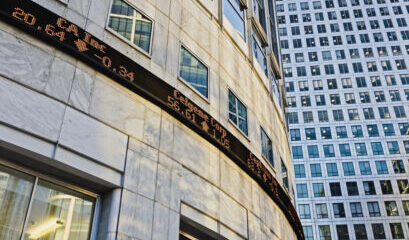High-cost DIP loans and unique structures shape bankruptcy financing in early 2025
The beginning of 2025 has brought with it at least 15 debtors seeking to finance their Chapter 11 cases with debtor-in-possession (DIP) financing, according to Debtwire’s Restructuring Database (RDB)[1], and 11 debtors receiving approval of their DIP financing packages proposed before the new year. Certain trends and notable features have emerged across recent cases, even though the year is not yet two months old. Indeed, most DIP facilities proposed this year are notable for their exceptionally steep costs with many carrying interest rates above 15%, and one case featuring fees exceeding 20% of the facility. Some proposals include innovative features such as interest convertibility, equity-based fees, and creeping roll ups. These developments underscore the growing complexity and customization of DIP financing in today’s lending market.
DIP facilities proposed and approved in 2025
The Chapter 11 debtors covered in this report and some of the key terms of their DIP facilities are listed in the following tables.
High interest rate and high fee facilities
Certain DIP facilities proposed within the first month and a half of this year stand out for their steep interest rates and fees, particularly those sought by Ligado Networks, Prospect Medical, Jackson Hospital, Wilson Creek Energy, and White Forest Resources as debtors-in-possession.
Ligado Networks: The largest DIP facility thus far in 2025 comes from Ligado in the amount of USD 939m, of which USD 497m is a roll up and USD 442m is new money.[2] The costs are exceptionally high, with 17.5% PIK and 15.5% cash interest rates along with numerous fees. The fees consist of a 5% commitment fee, 3% unused fee, 12.5% backstop fee, and an initial USD 20,000 DIP agent fee that is set to increase to USD 80,000 annually. Assuming a USD 20,000 agent fee, Debtwire estimates the total fees on Ligado’s DIP will constitute 20.38% of the facility.
The proposed facility drew an objection from one of Ligado’s largest creditors, Inmarsat Global Limited, who argued that the fees are excessive and that the facility’s terms provided Ligado’s prepetition secured lenders—turned DIP lenders—with too much control over the Chapter 11 proceedings. The bankruptcy court disagreed and granted the debtors final approval for the facility on 6 February 2025.
Prospect Medical Holdings: The two facilities sought by the debtors, a USD 90m ABL facility and a USD 100m new money term loan, attracted both court and creditor scrutiny due to steep fees. Specifically, objections were filed regarding the USD 100 new money term loan to be provided by JMB Capital Partners Lending in part, for the inclusion of a 4% commitment fee (USD 4m) as well as an exit fee that is calculated as 6% of the total amount of DIP Loans funded at the time of the interim order (amounting to USD 1.74m), plus 6% of the total DIP Commitments upon entry of the final order (amounting to USD 6m), representing 11.74% of the USD 100 new money term loan at USD 11.74m. Judge Stacey Jernigan of the US Bankruptcy Court for the Northern District of Texas ultimately approved the facilities with the requested fees.[3]
Jackson Hospital: The debtor is seeking final approval of a USD 24.5m new money facility with a 14% interest rate that will increase by 5% in case of a default, which is more than twice the typical +2% default rate. The commitment fee is 4% of the total DIP commitment (amounting to USD 980,000), whereas the exit fee is 6% and, like the 6% exit fee in Prospect Medical, it is based on the commitment outstanding at entry of the interim order in addition to 6% of the total commitment (amounting to USD 2.07m). The combined fees represent 12.4% of the total DIP facility commitment, at USD 3.05m.
Wilson Creek Energy: The USD 15m facility pays a 13.5% interest rate along with some hefty fees—a 5% exit fee and a 5% commitment fee. Although the debtors attempted to obtain DIP financing from other parties, these attempts failed. Accordingly, despite the high fees, the bankruptcy court granted the debtors final approval of the facility on 29 January 2025.
White Forest Resources: The debtor seeks approval of a complex DIP facility that includes a USD 15.33m term loan and a USD 5.41m revolver with various roll ups. The revolving loan carries a prime + 9.5% interest rate, and the term loan includes six different fees, which total at least 6.7% of the facility, per Debtwire’s estimates. The bankruptcy court characterized the facility as expensive financing and reduced the initial USD 643,333 fee burden by the USD 280,000 roll-up upfront fee. The roll-up upfront fee will be considered again at the final hearing on the DIP motion.
Pottsville Operations: While the debtors were granted USD 9.7m in DIP financing on a final basis on 19 December 2024, they recently sought to modify the facility for additional funding. The proposed modifications—granted by the bankruptcy court—raise the loan amount to USD 14m, require a loan fee of up to 5% on additional amounts borrowed, and increase the interest rate to 15% from 13%. With the combination of a higher interest rate and an increased loan fee, the modified facility stands out as expensive.
The high pricing of the DIP facilities noted above reflects lenders’ risk-adjusted returns and, in some cases, a lack of alternative financing options for the debtors. Ligado’s DIP facility imposes the highest interest rates at 17.5% PIK and 15.5%, coupled with multiple layers of fees that result in an estimated 20.38% of the facility. Similarly, Jackson Hospital’s facility carries a 14% base interest rate, escalating to 19% upon default—more than double the typical default penalty—along with commitment and exit fees that, per Debtwire’s estimates, collectively make up 12.45% of the total DIP. White Forest’s high-cost DIP facility includes a total interest rate of 17% on the revolver and at least six fees amounting to 6.7% of the term loan. Given the excessive cost of the facility, the bankruptcy court has temporarily reduced the fees to be paid until further consideration at the final hearing. Like the fees in White Forest, those in Prospect Medical’s DIP facilities also drew scrutiny given its commitment and exit fees, which amount to 11.74% of just one of the facilities sought. Despite the bankruptcy judge noting her concern regarding the inflated costs, both facilities were approved with the fees intact.
DIPs with noteworthy structural features
While some facilities have stood out for their high or low costs, others have come with unique features that are also noteworthy.
Zips Car Wash: The USD 82.5m DIP facility includes interest that is paid-in-kind by default but may be converted to cash at the debtors’ election.
First Mode Holdings: The USD 26m term loan has a SOFR+ 6.3% interest rate with a commitment fee of 35% of the applicable margin PIK on undrawn amounts. The facility requires prepayments upon, among other things, receipt of more than USD 100,0000 from any asset sale. Based on the proposed budget, accrued fees and interest are expected to amount to only USD 1.227m over a 13-week period.
Diamond Comic Distributors: The USD 41m DIP facility includes a success fee structure tied to asset sale proceeds.
Jervois Texas: The USD 49m facility includes fees to be paid in new equity interests instead of cash, which is an unusual structure.
Liberated Brands: The USD 35m ABL facility provides for a staged roll-up process by first absorbing prepetition letters of credit and then rolling up prepetition loans through phases.
CareMax Inc.: The USD 122m term loan includes a roll up (USD 91.5m) that significantly exceeds new money (USD 30.5m). The facility carries a SOFR+ 11% PIK interest rate, a + 2% default rate, and a 10% exit fee, which aside from the standard default rate, also reflect high borrowing costs.
These DIP facilities incorporate unique structural elements that go beyond standard pricing considerations. Jervois Texas seeks commitment and exit premiums in new equity rather than cash, easing liquidity strain. Liberated Brands employs a creeping roll up, gradually converting prepetition ABL debt into DIP obligations. These innovative structures differentiate the facilities from traditional high- or low-cost DIP financing. Of the 29 DIP facilities discussed in this report, 18 include roll ups. Of the 18 DIP facilities that include roll ups, only four include more new money than roll up. These facilities were sought by the following debtors: SilverRock Development Company, Jervois Texas, Liberated Brands, and White Forest. Six of the facilities with roll ups have a ratio of new money to roll up below 50%. This data highlights the prevalence of roll ups in DIP financing and underscores the limited instances in which new money exceeds prepetition debt conversion.
Facilities with lower costs
Compared to the high-cost DIP facilities burdened with steep interest rates and layered fees, a few debtors have secured potential financing on far more favorable terms.
Mondee Holdings: The USD 110m multi-tranche facility features both new money and roll ups but includes low fees, amounting to just 0.52% of the total commitment per Debtwire’s estimates.
Onyx Owners: The USD 1.136m DIP facility carries a modest 3.12% interest rate with no fees.
Cold Spring Acquisition: The USD 4m revolver carries a 5% interest rate with no fees beyond cost reimbursements.
These lower-cost facilities feature minimal fees, moderate interest rates, or are even structured so that there are no additional charges beyond cost reimbursements. Mondee Holdings, Onyx Owners, and Cold Spring Acquisition are examples of debtors granted access to liquidity without the heavy cost burdens in facilities sought by debtors like Ligado Networks or Jackson Hospital.
With few exceptions, 2025 Chapter 11 DIP financing has been defined by a split between high-cost, complex facilities and a few lower-cost alternatives. Based on the foregoing, this year will likely bring evolving strategies and growing innovation in DIP financing that is structured more for the benefit of the lenders than debtors.
[1] Debtwire’s RDB covers bankruptcy cases with funded debt of USD 10m or more, however, exceptions to that threshold are made for a small number of select and otherwise notable cases. The tables included here and in the attached Excel file exclude Chapter 15 filings, and the cut-off for DIP financing motions to be considered in this report was midnight 14 February 2025.
[2] Notably, American Tire Distributers obtained approval for the largest DIP facility last year in the amount of USD 1.2b.
[3] After commenting on the high fees, Judge Stacey Jernigan of the Northern District of Texas approved the DIP facilities on an interim basis on 14 January 2025. On 29 January 2025, Medical Properties Trust (MPT), one of Prospect’s key creditors, filed a notice of appeal of the interim order arguing against approval of the USD 100m new money term loan. On 11 February 2025, the State of Connecticut filed an objection arguing that the facilities (i) fail to protect over USD 100m in secured claims for unpaid provider taxes and (ii) jeopardize Medicaid recoupment rights. The next day, following negotiations among the debtors, MPT, and the UCC, Judge Jernigan entered a final order approving both DIP facilities. Through the negotiations, the key changes to the USD 100m new money term loan facility include requiring the debtors to: (1) pay MPT’s professional fees in an amount up to USD 1.25m and (2) grant MPT an additional USD 5m in secured claims, with the caveat that these payments would be subject to claw back if MPT’s prepetition liens and/or claims are found to be avoidable. The commitment and exit fees were ratified and deemed non-refundable.















